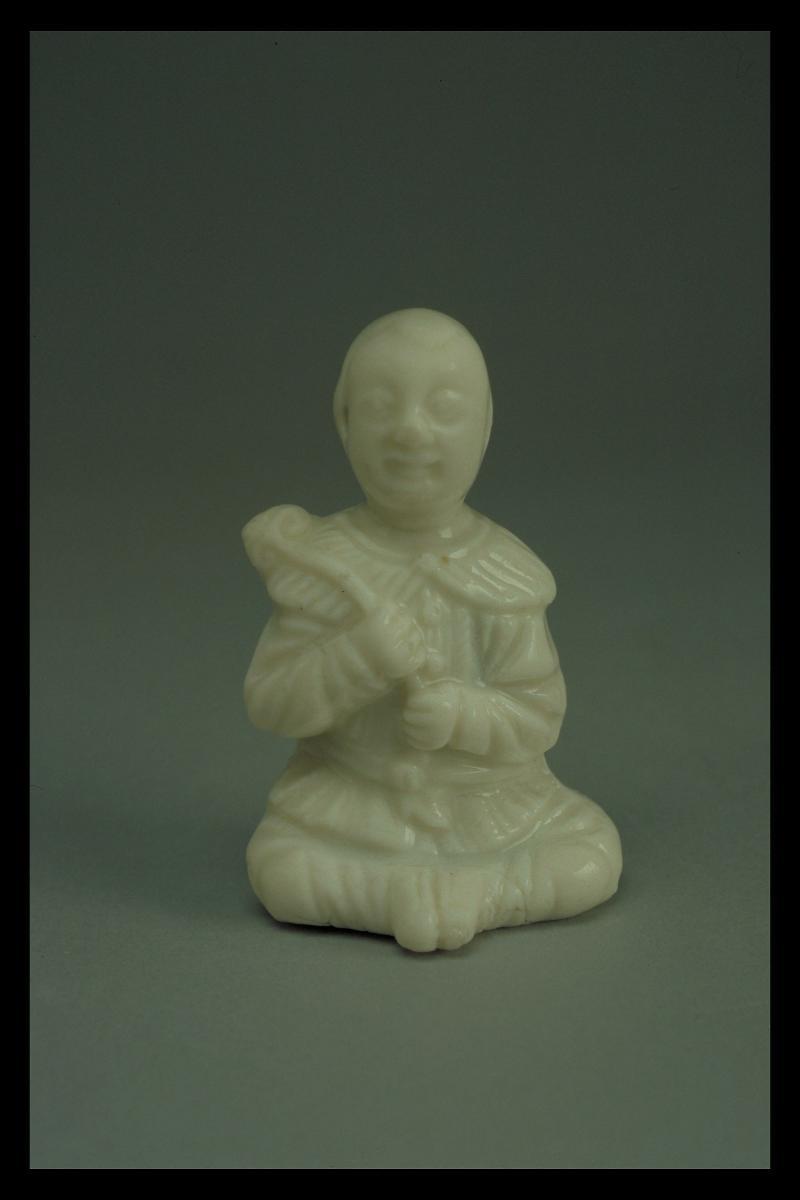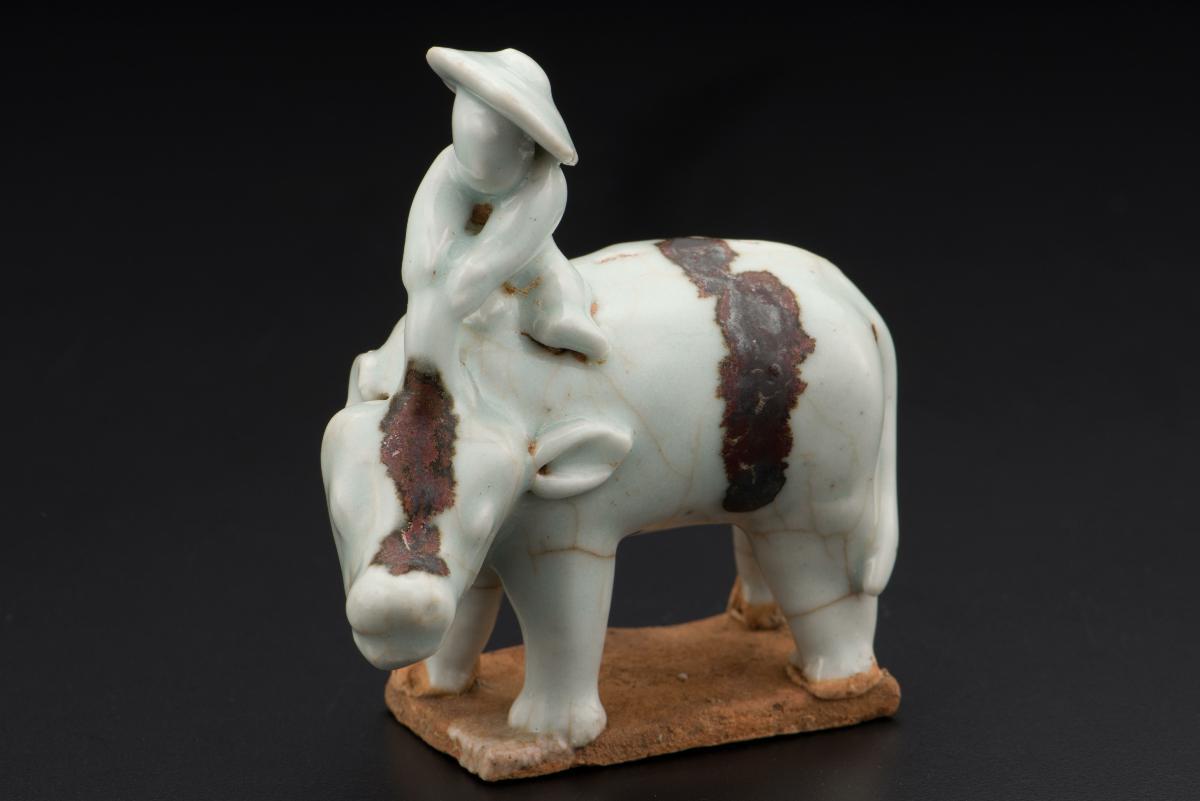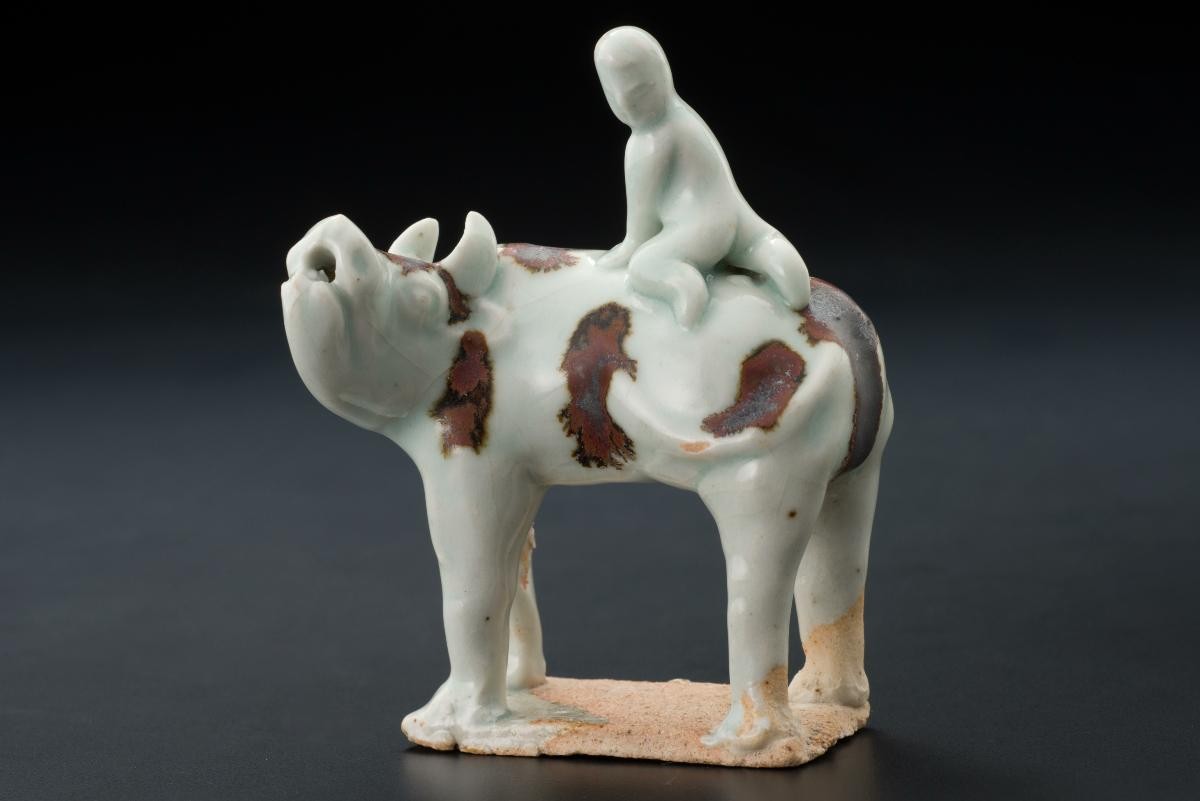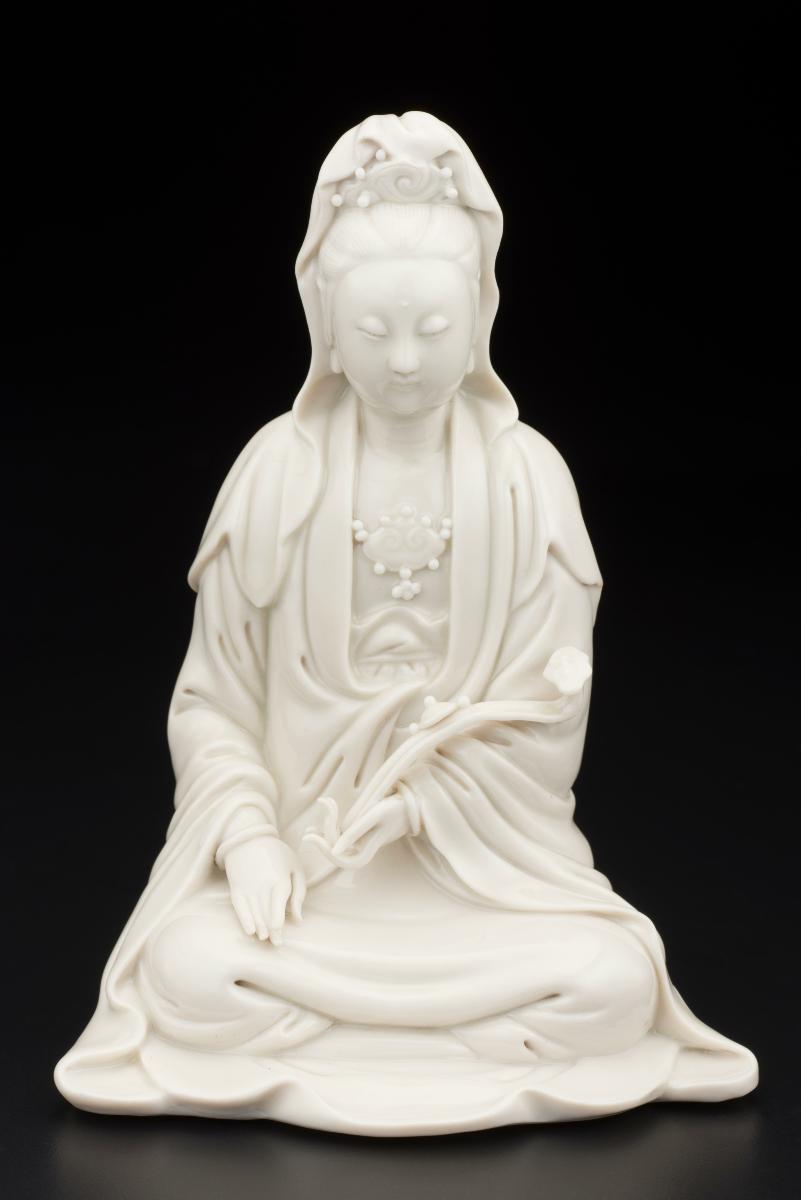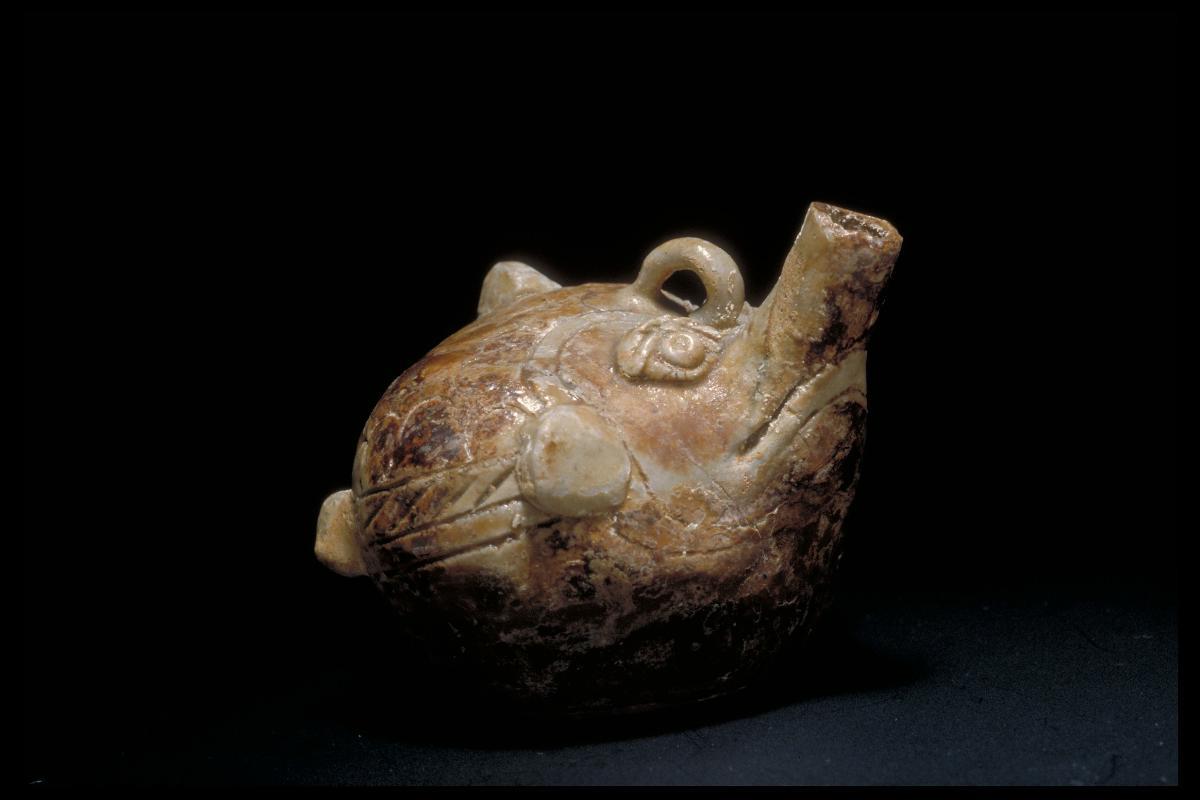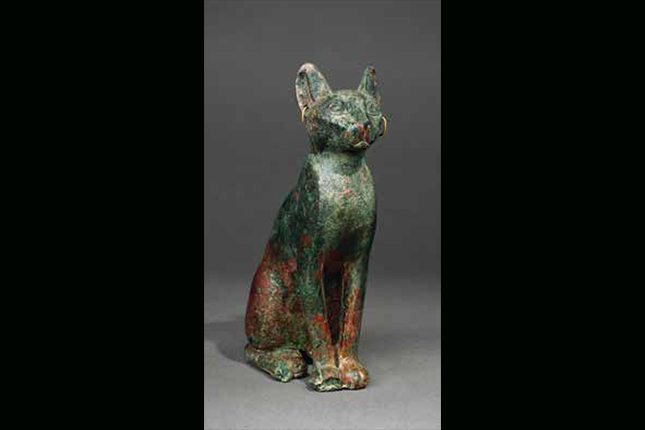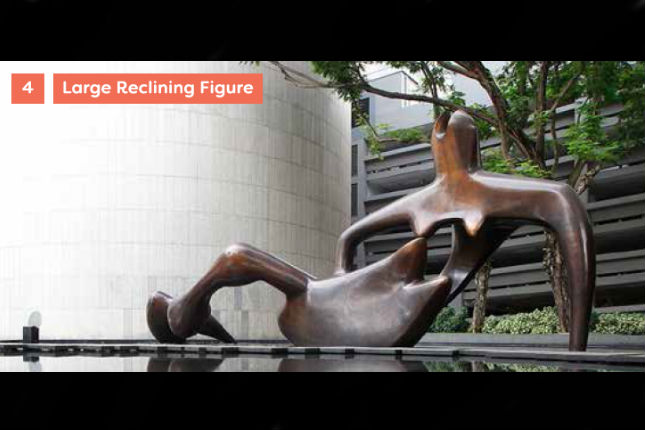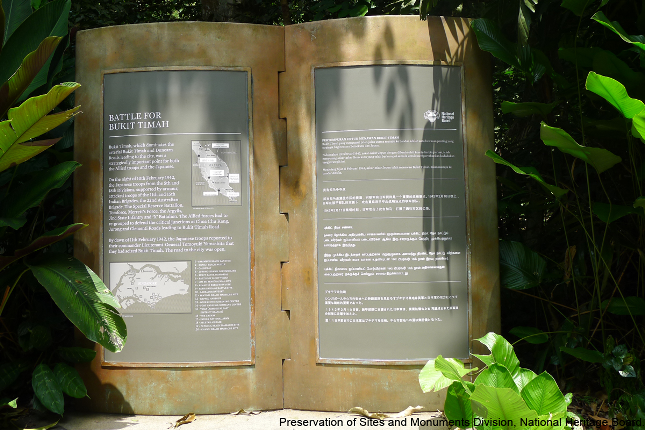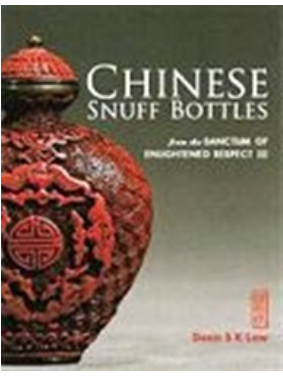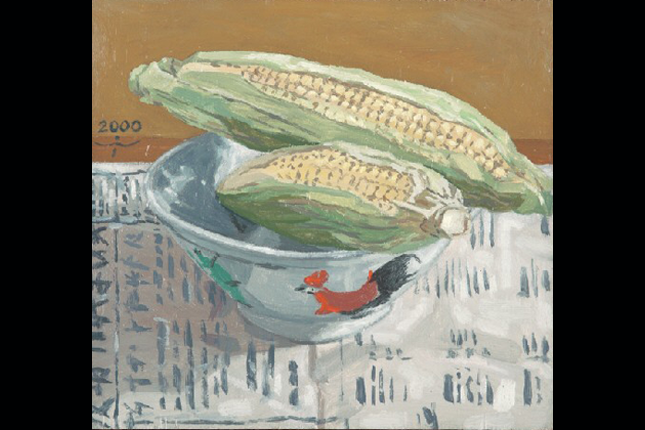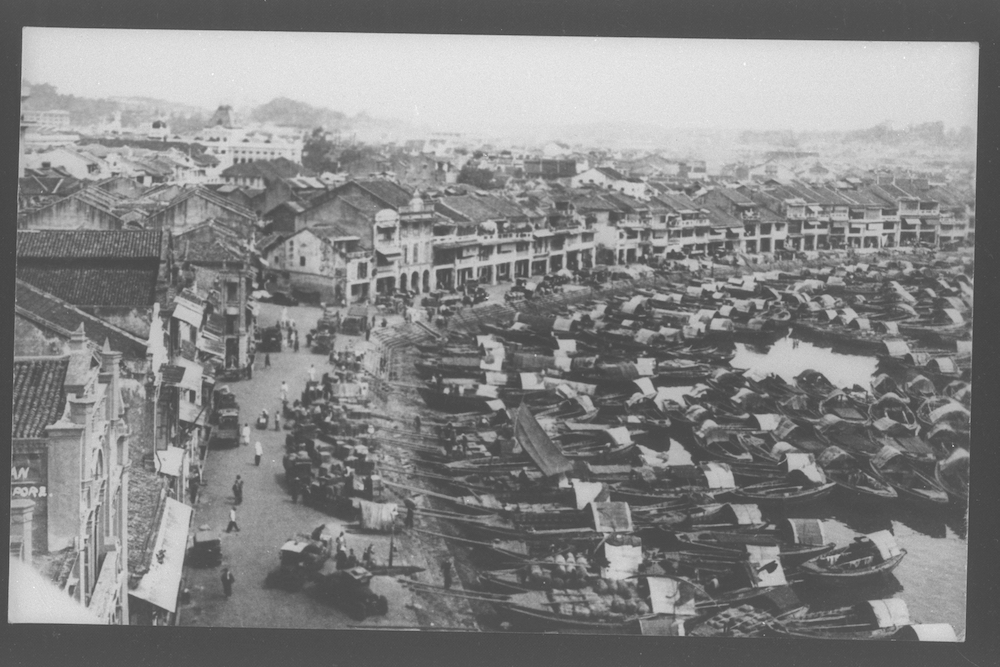This miniature seated figure of a boy is a simply moulded piece with little or no hand-finishing. The holes on each side of the head and at the back of both shoulders suggest that this piece was intended to be a water-dropper. A mix of Chinese and Western attributes, in this case the ruyi sceptre held up to one shoulder and the Western style buttoned tunic with wide collar, are typical of these small pieces for export to Europe. Children were depicted in Chinese art from as early as the Eastern Han (25-220 CE) and Tang (618-906 CE) periods, but more so from the 10th century onwards. The auspiciousness of such images has been interpreted as having a two-fold reading; one that they originate from images of reborn souls seated on lotus flowers in Buddhist paradise scenes, the other that they symbolise fertility and the desire for male off-spring.Dehua, located on the southeast coast of Fujian province, is well known for its production of white porcelain, known to Europeans as 'blanc de Chine'. The earliest Dehua porcelain was produced as early as the 14th century but the production and quality of these porcelain peaked around the 17th and 18th centuries.




